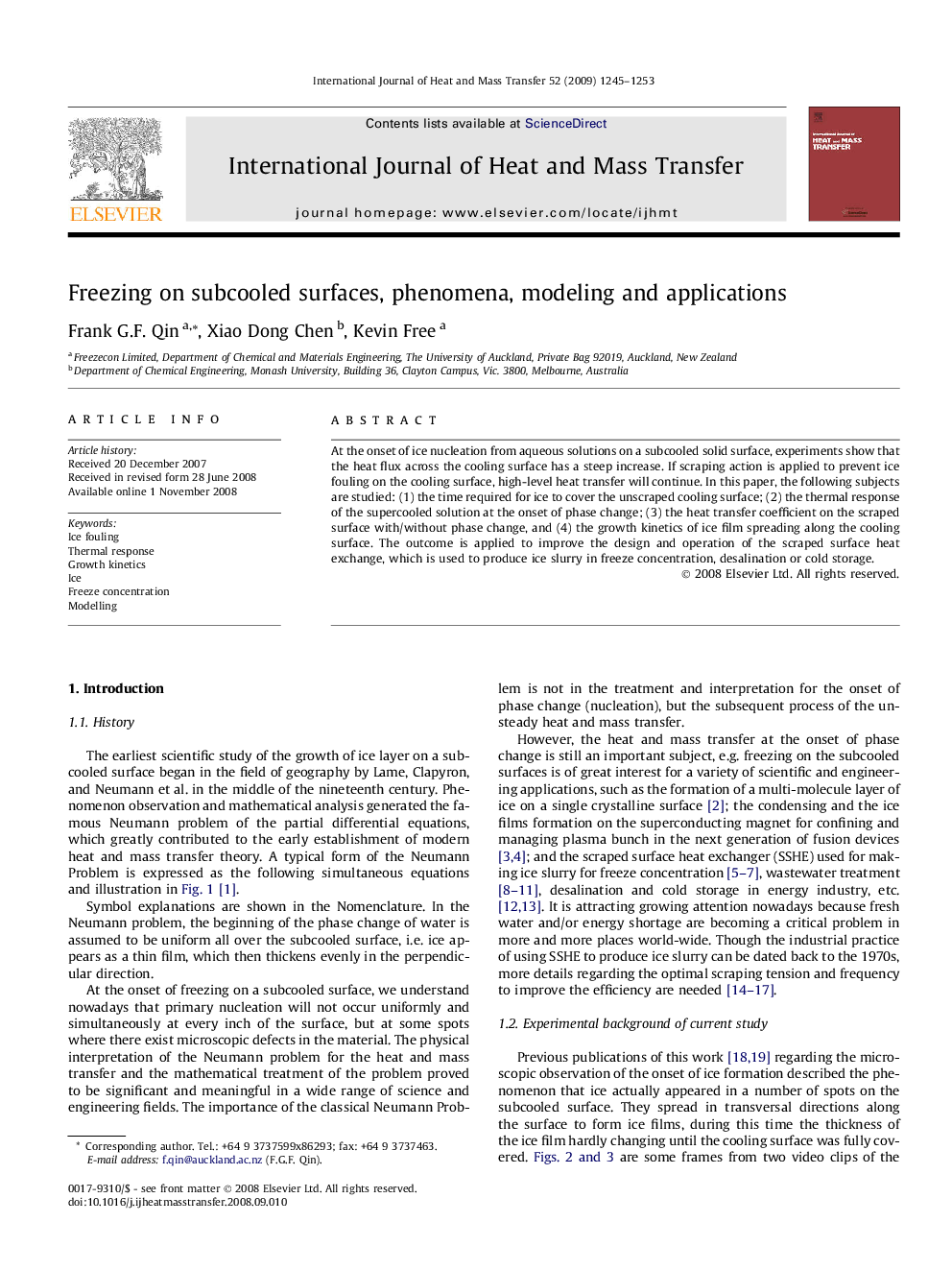| Article ID | Journal | Published Year | Pages | File Type |
|---|---|---|---|---|
| 659731 | International Journal of Heat and Mass Transfer | 2009 | 9 Pages |
At the onset of ice nucleation from aqueous solutions on a subcooled solid surface, experiments show that the heat flux across the cooling surface has a steep increase. If scraping action is applied to prevent ice fouling on the cooling surface, high-level heat transfer will continue. In this paper, the following subjects are studied: (1) the time required for ice to cover the unscraped cooling surface; (2) the thermal response of the supercooled solution at the onset of phase change; (3) the heat transfer coefficient on the scraped surface with/without phase change, and (4) the growth kinetics of ice film spreading along the cooling surface. The outcome is applied to improve the design and operation of the scraped surface heat exchange, which is used to produce ice slurry in freeze concentration, desalination or cold storage.
